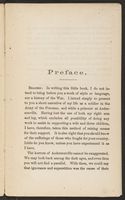A history of George W. Murray, and his long confinement at Andersonville
Dublin Core
Title
Subject
Description
A pattern-maker in Springfield before the outbreak of the Civil War, George W. Murray was taken prisoner, along with his three elder brothers, after the battle of Spotsylvania and confined to the infamous Confederate prison at Andersonville. He survived the ordeal, although parts of his hand and foot were amputated, and he lost the use of his right limbs. Murray then printed and sold this account of his imprisonment to help his wife and children:
"All the fingers on my right hand gone, and my arm, from my wrist to my elbow, partially paralyzed; nearly one-half of my right foot was in a similar condition, while the rest of it is drawn entirely out of shape, which obliges me to use a crutch … I returned home a mere wreck of my former self. Therefore, unable to work, and ashamed to beg, I have taken this method to raise a small capital to start some business, in order to enable me to support my family comfortably."
In 2005, Harvard purchased a collection of over 130 books, pamphlets, poems, and broadsides, all examples of the genre of mendicant literature—items composed and printed to raise charitable funds for their disabled authors. These narratives and autobiographical accounts of the hardships and triumphs of the blind, deaf, lame, and war-wounded are all now primary resources for the emerging field of disability studies.

